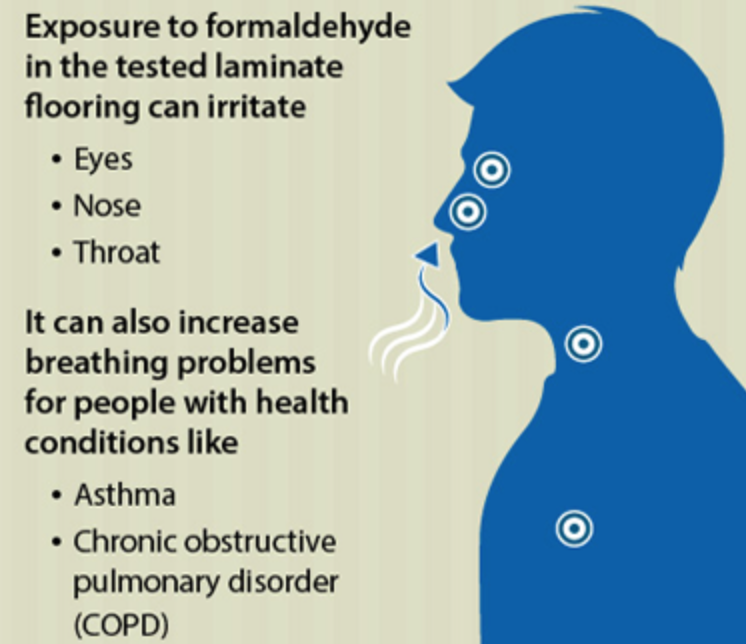
60 Minutes aired a report that Chinese-made laminate flooring contained dangerous levels of known-carcinogen formaldehyde.
The formaldehyde is found in the glue that holds the wood particles together in the core boards. A laminate top covers the boards to trap most of it, however, the amount of the substance a given family may inhale ultimately depends on how much is in the flooring.
California has standards for just how much constitutes a safe amount of this cancer-causing agent. An environmental attorney in the state, Richard Drury, ordered tests on 150 boxes of the laminate flooring from Lumber Liquidators, and told Anderson Cooper just how bad the problem is.
“The average level in Lumber Liquidators products that we found was over six to seven times above the state standard for formaldehyde,” he says. “And we found some that were close to 20 times above the level that’s allowed to be sold… It’s a startling amount. It was so high, in fact, that one of our test labs thought their machine was broken.”
Drury estimates that, nationwide, hundreds of thousands of homes may be affected by formaldehyde.
What is the substance, exactly?
According to the EPA and Health Canada, formaldehyde is a colourless gas with a strong odour that is flammable at room temperature. You may know the name (and the smell) from your frog dissection in high school biology class — formaldehyde is key for embalming — but the substance is also found in other items like resins, building materials, household products like glues and paints, dishwashing liquids and fabric softeners, even cosmetics and some medicines. It’s also a byproduct of cigarette emissions, including e-cigs.
Essentially, formaldehyde (or additionally, formol or formalin when it’s found as a solution) has a myriad of linking properties, which is why it’s ideal for so many uses. The stable molecule is made up of two hydrogen atoms and a super-reactive carbonyl group, meaning it’s able to bind, build and preserve easily and at low cost.
“Formaldehyde provides exceptionally high functionality in a resource-efficient way,”says the American Council on Chemistry. “This means it is affordable; no other organic molecule is able to achieve the same results at the same cost.”
As a known carcinogen, though, formaldehyde also carries a cancer risk. Everyone is exposed to small amounts of formaldehyde in the air we breathe, and there are even small amounts in the body. High amounts are what concern experts, though.
What are the symptoms of formaldehyde exposure?
In the short-term, exposure can lead to irritation of the skin, eyes, nose and throat. Concentrated high amounts, however can lead to respiratory issues and certain cancers like nasopharyngeal cancer and leukemia, according to the National Cancer Institute. Studies of embalmers and industrial workers have shown links between the chemical and an increased cancer risk, as well as research conducted on animals.
What can you do to lower your exposure?
Check labels and do your research. For cosmetics, you can turn to something like Skin Deep, the Environmental Working Group’s database of common ingredients and additives, including formaldehyde, detailing products’ levels of toxicity.
Since formaldehyde is contained within flooring, the NIH’s National Institute for Environmental Health and Sciences recommends buying items labeled “CARB (California Air Resources Board) Phase 1 or Phase 2 compliant, or made with ULEF (ultra-low-emitting formaldehyde) or NAF (no-added formaldehyde) resins.”That said, Lumber Liquidators’ laminate flooring was labeled as such, and that’s now being called into serious question.
Review Health Canada Website for further information regarding Formaldehyde
http://www.hc-sc.gc.ca/ewh-semt/air/in/poll/construction/formaldehyde-eng.php
Article written published by Yahoo Health
